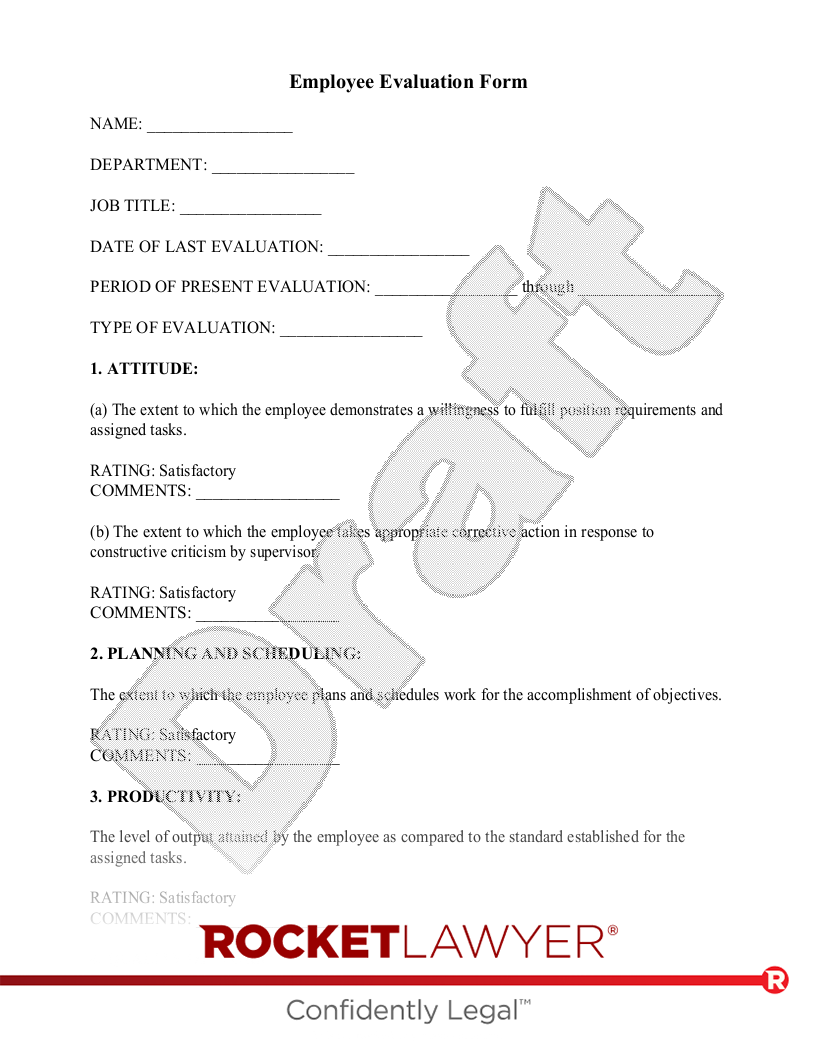What is the purpose of an employee review and assessment?
Performance reviews help your staff grow and develop. If done right, they can improve employee job satisfaction and even motivate employees to work harder and smarter.
Employee reviews and assessments highlight things that are going well and things that need improvement. They also offer a platform for employees to inform employers about items that might simplify or improve job performance. For employees, it may also be viewed as an opportunity to show they deserve a raise.
Employee reviews and assessments offer the following benefits:
- Provide quantitative measurements to evaluate staff.
- Supply vital information to employees about expectations.
- Facilitate relationships between employees and employers.
- Enable self-assessment and peer assessment.
- Deliver feedback and input.
- Motivate staff to improve performance.
- Promote communication that reduces turnover.
Every Employee Evaluation is different and employers often get back what they invest into the process. When employees know that reviews are tied to raises or bonuses, meeting larger objectives and continuous improvement becomes more important.
What are some ways to provide reviews and assessments for employees?
An employer may use one or more of several methods for employee reviews and assessments. Most, if not all, involve regularly completing an Employee Evaluation and following up with constructive feedback to the employee. Below are four of the most widely used methods:
Top-down reviews: These reviews provide feedback to the employee from the employer, often from a direct supervisor or manager who interacts with the employee. The supervisor directs the process because they know the job expectations. Managers and supervisors can also provide helpful information to the employee in order for the employee to improve, or provide a place for the employer to praise an employee's accomplishments.
This is a common process. It evaluates employee expectations and provides feedback on performance. It does not, however, always provide the best platform for an employee to voice their concerns and provide feedback about management. It is often a one-sided process.
Peer review: These reviews feature evaluations by other employees. They ask coworkers to provide feedback about working with another employee, then management will review the feedback and provide employees with only the relevant comments. Peers that interact on a regular basis may have insights for each other or know the expectations of the job because they are in the same or similar positions.
There are some serious drawbacks to this method, as it can foster inner competition or jealousy that might not be healthy for team morale. This can be a significant problem if scheduling, raises, Bonus Plans, or promotions are competitive.
The 360-degree review: In a 360-degree review, feedback is gathered from several sources, including supervisors, peers, subordinates, and the employee themselves. You might even gather reviews from customers or clients as well. This review is usually led by an HR department and may utilize anonymous feedback so those providing reviews can freely express themselves.
The disadvantage with this review method is that while it provides comprehensive feedback, it takes time and effort to conduct. The anonymous nature may also intensify harsh criticisms.
Self-assessment: Employees can also assess themselves. Self-assessment forces the employee to think critically about their own job performance and it opens the door for the employee to accept criticisms from supervisors or managers. Often, employees are able to provide information that managers or supervisors would not otherwise have known. It can also ensure that an employee has the resources and training to succeed.
Self-assessment works best when paired with the top-down review to compare and contrast expectations with self-assessment.
Should employees be allowed to see their reviews?
In general, it is a good idea to allow employees to see their reviews. In fact, many states require employers to provide access to performance reviews, disciplinary records, and other information concerning the employer/employee relationship. Due to this, it may be a good idea for the feedback to be reviewed by a manager or HR professional before it is finalized and provided to the employee. Overly critical reviews that are not based on objective criteria can harm morale, or even become the basis for legal claims.
Apart from being legally required to allow employees to view them in many states, seeing the reviews can help employees recognize areas of improvement. You can, however, keep feedback anonymous. If you do, you should be consistent with anonymity if you use it in your review and assessment program.
How often should an employment review and assessment be conducted?
Most companies will perform at least an annual employee review. Conducting reviews more often, such as every three to six months, can be more effective compared to once per year.
If your goal is to motivate and retain staff, quarterly reviews can provide regular feedback to help employees meet goals, develop, or be rewarded for achievements. When using multiple reviews per year, it is common for employers to only do one large annual review, while other reviews may target specific issues or simply be check-ins to make sure employees are on track to receive a successful annual review.
Do part-time employees need an evaluation?
Ultimately, whether any employee needs an evaluation is up to the employer. Part-time employees can benefit from regular evaluations and feedback, however, employers may want to consider a different or shorter review process for part-time employees to keep their costs down.
To learn more about how to best utilize Employee Evaluations, reviews, and assessments, reach out to a Rocket Lawyer On Call® attorney.
Please note: This page offers general legal information, not but not legal advice tailored for your specific legal situation. Rocket Lawyer Incorporated isn't a law firm or a substitute for one. For further information on this topic, you can Ask a Legal Pro.
